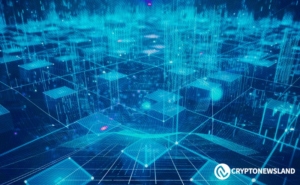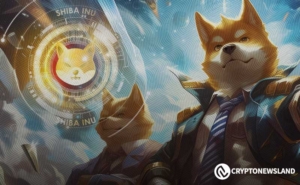In-depth analysis of global RWA tokenization: redefining investment and ownership
Original author: Kalp
Original translation: Vernacular Blockchain
This article will explore the vibrant world of real-world asset (RWA) tokenization. Learn how blockchain technology is transforming the financial industry by converting physical assets such as real estate and gold into digital tokens. Dive into conversations with key industry figures, grasp emerging trends, and learn how local innovations like KALP tokenization are making waves. The blog provides in-depth insights into major players and future trends, and comprehensively shows how tokenization redefines investment and ownership.
Max and Ella are discussing a blog about the growing trend of tokenizing real-world assets (RWAs), which explains how blockchain technology is changing the way people invest in high-value assets such as real estate and commodities. The blog highlights how tokenization is breaking down barriers, the latest trends, and the key players.

1. Big brands that lead the trend
1) JPMorgan Chase
Pioneering blockchain with Onyx: JPMorgan Chase is at the forefront of blockchain innovation through its Onyx platform. Onyx aims to simplify financial transactions using blockchain technology. The platform enables JPMorgan Chase to issue and manage digital tokens, including tokenized bonds and stocks.
Testing and Implementation: JPMorgan has successfully tested the tokenization of multiple assets, including bonds and stocks. For example, they conducted a pilot program involving the issuance and trading of tokenized bonds on their blockchain platform. This not only demonstrated its technical capabilities, but also highlighted the potential of blockchain to improve market efficiency, shorten settlement times, and reduce transaction costs.
Broad impact: By integrating blockchain into its operations, JPMorgan Chase has demonstrated that this technology is not only suitable for technology startups, but can also be adopted by traditional financial institutions. Their participation shows that blockchain has the potential to drive changes in the traditional banking and financial industries, establishing their leading position in digital innovation.
2) Societe Generale
Tokenized bonds issued on Ethereum: Societe Generale, one of the major French banks, has taken a major step towards asset tokenization by issuing tokenized bonds on the Ethereum blockchain. This move is noteworthy because it represents traditional financial institutions embracing blockchain technology to innovate core financial products.
Embracing new technologies: By using the Ethereum blockchain, Societe Generale is moving away from traditional financial methods and exploring the potential of blockchain to provide faster and more transparent financial transactions. The use of Ethereum smart contracts allows for automated processes, thereby increasing efficiency and reducing operational risks.
Impact on the financial industry: Societe Generales actions are a strong endorsement of the capabilities of blockchain, highlighting its potential to revolutionize the creation, management and trading of financial products. Their efforts also contribute to the widespread acceptance and application of blockchain technology in the financial industry.
3) Securitize
Simplifying digital token issuance: Securitize focuses on simplifying the issuance process of digital tokens while ensuring compliance with regulatory requirements. Their platform helps companies tokenize assets and provides an efficient process for creating and managing these digital securities.
Compliance: One of Securitize’s core strengths is its focus on securities regulatory compliance. The services they provide ensure that tokenized assets meet legal standards, which is critical to maintaining investor confidence and ensuring market integrity.
Improving market liquidity: By providing a compliant digital token issuance and trading platform, Securitize enhances market liquidity and accessibility. Their technology supports secondary trading of tokenized assets, enabling investors to safely buy, sell and trade these digital securities.
4) Tokeny
Support for blockchain integration: Luxembourg-based Tokeny assists institutions in moving their assets onto the blockchain. They focus on ensuring that the tokenization process meets security standards and regulatory requirements, which is critical for institutional adoption.
Platform Features: Tokenys platform provides solutions for creating and managing tokenized assets, with a focus on security and compliance. They provide tools for secure token issuance, investor onboarding, and asset management, helping organizations enter the tokenization space smoothly and efficiently.
Building trust and reliability: By prioritizing security and regulatory compliance, Tokeny helps to enhance trust in tokenized assets and encourages institutions to participate in the exploration of blockchain technology. Their efforts promote the widespread acceptance and normalization of asset tokenization in traditional financial markets.
2. What is the latest trend of RWA tokenization?

Institutional participation: Major financial institutions including Blackstone, Goldman Sachs, and Fidelity are increasingly entering the tokenization space, increasing the credibility and influence of the market.
Sustainability: Tokenization of sustainable assets (such as carbon credits and renewable energy projects) is growing, driving investment into environmentally friendly projects while generating financial returns.
Enhanced Liquidity: Tokenization improves the liquidity of previously illiquid or difficult-to-access assets by allowing fractional ownership of assets and easier trading.
Regulatory Developments: Evolving regulations and frameworks are shaping the tokenization landscape, and governments and regulators are working to address legal and compliance issues.
Technological Advancements: Innovations in blockchain technology, such as smart contracts and decentralized finance (DeFi) protocols, are improving the efficiency and functionality of tokenized asset platforms.
Global Expansion: Tokenization is gaining traction in many regions around the world, especially in financial centers such as the United States, Europe, and Asia, where it is showing a significant adoption trend.
Integration with traditional finance: The integration of tokenized assets with traditional financial systems is deepening, including partnerships between blockchain platforms and traditional financial institutions.
Increasing market segmentation: Tokenization is expanding beyond traditional asset classes to include niche markets and industries such as art, collectibles, and intellectual property.
Improved transparency and security: The use of blockchain technology brings higher transparency, traceability and security to tokenization, solving common problems in asset management.
Innovative investment tools: Through tokenization, new investment products and tools are emerging, such as tokenized real estate funds and commodity-backed tokens, providing investors with diversified investment opportunities.
3. KALP Tokenization: A Local Story with Global Potential
Back in India, an innovative project called KALP is making a splash. They launched BIMTECH CBDC, a digital currency for transactions in an academic setting. Students, suppliers, and managers have all become part of this tokenized ecosystem. More than 1,300 transactions have been completed, showing how tokenization can be applied in real-world scenarios. KALPs GINIToken serves as transaction fees, making the entire system run efficiently, proving that even small ecosystems can benefit from tokenization.
Tokenization of commodities
Tokenizing commodities like gold and oil has become a major trend. Companies like Paxos and Tether Gold allow investors to hold tokens that are backed by physical gold reserves. This makes it easy to trade or invest in commodities without having to deal with the complexity of the actual assets.
A paradigm shift in real estate
Real estate is one of the most exciting areas for tokenization. Platforms like RealT and tZERO allow people to purchase fractional ownership of a property. This means you don’t have to buy the entire property to invest in real estate. This makes real estate investing open to everyone, not just the wealthy.
4. Dealing with the regulatory environment
Governments are beginning to recognize the potential of tokenization and are supporting this trend through regulatory measures. For example, the EU’s Markets in Crypto-Assets Regulation (MiCA) and the US Securities and Exchange Commission’s (SEC) growing focus on tokenized securities are paving the way for widespread tokenization adoption. As these regulations become clearer, it will be easier for institutions and individuals to tokenize assets safely and legally.
In short, the adoption of global RWA tokenization is accelerating, and it will change our perception of asset ownership and transactions. Whether it is giants like JPMorgan Chase or innovative local projects like KALP, tokenization is gradually integrating into our daily financial life. With the rise of trends such as sustainable development and partial ownership, we are moving towards a more inclusive and efficient financial world.
5. Frequently Asked Questions
1) What is the trend of asset tokenization?
Asset tokenization is growing rapidly as it provides greater liquidity, fractional ownership, and more convenient investment opportunities. The trend is driven by advances in blockchain technology and growing interest from retail and institutional investors.
2) Which countries are leading in the adoption of RWA tokenization?
Countries such as the United States, Switzerland, and Singapore are leading the RWA tokenization space thanks to their developed financial markets, supportive regulatory frameworks, and innovative technology ecosystems.
3) How do institutions participate in RWA tokenization?
Institutional players, including major banks, asset managers, and investment firms, are increasingly engaging in RWA tokenization to increase liquidity, simplify operations, and open up new investment avenues.
4) How big is the market for tokenizing real assets?
The RWA tokenization market is growing rapidly and is expected to reach approximately $2 trillion by the mid-2020s, driven by increasing popularity and technological advances.
5) What are the main challenges hindering the global adoption of tokenized assets?
Key challenges include regulatory uncertainty, technology integration issues, and concerns about security and market fragmentation, which have hindered the widespread adoption of tokenized assets.
6) How big is the RWA tokenization market?
The RWA tokenization market is estimated to be approximately $10 billion by 2024, reflecting the early but expanding stage of this space within the broader financial landscape.
Original link
Disclaimer: The content of this article solely reflects the author's opinion and does not represent the platform in any capacity. This article is not intended to serve as a reference for making investment decisions.
You may also like
Blockchain Association Urges Congress to Repeal IRS DeFi Broker Rule

Shiba Inu Price Faces Bearish Trends Amid 79% Decline in Whale Moves

Here’s How Much Bitcoin U.S. States Could Accumulate

NFTScan Joins Conduit Marketplace to Expand NFT Data Access Across 20+ Blockchains
